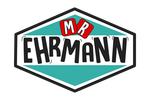|
Project Based Learning is no longer just a buzzword but a growing trend and designed instructional approach. So often I see teachers struggle to incorporate projects. They have many legitimate concerns that hinder their ability to fit in activities.
Recently, I modified the fifth grade science unit on terrestrial biomes completely through project based learning. The student creations are not to assess learning, but to actually teach the unit content; putting the students in the driver's seat of of learning. The teacher now facilitates learning, through clear expectations, differentiated support, and purposeful mini-lessons. Why I Changed it to PBL?: There is specific science content that the students need to learn. As I reviewed slides used by previous teachers to lecture the content I realized that the same information was widely accessible through nonfiction resources. Our library has great online databases and books for students to use and access. I provided specific expectations for students to research all the information. In my opinion, they are capable of learning about a biomes climate from a book instead of my slideshow. Secondly, they didn’t need to learn about the animals and plants in my slideshow, but any animal and plant they found interesting. Project Design: The students have a specific list of content they need to find for each biome. They do all the research on their own. I check in with each group throughout the class to support their needs. Additionally, I approve each biome before they move on to the next. The project piece to the unit is to create fun documentaries as if they are in each biome. They need to highlight all the key facts in the video. Each biome will be graded on the video, so all facts must be included. Unit Overview:
Mini-Lessons: Most of the class period the students are actively engaged in their own work. They are researching, collecting information, writing scripts, planning documentaries, and filming. There is constant conversation and collaboration from the teams to work through each biome. Throughout the unit I have meaningful and important mini lessons. My mini-lessons focused on important concepts for students to understand:
Reflection: Facilitating a unit in this model takes time to become comfortable. I already know specific checkpoints I need to provide more guidance, and also less guidance. I want to make sure the students have the freedom to be creative, but also learn the important content.
0 Comments
There is a good chance that you could be the first teacher in your school and possibly your district to flip. Regardless if your the first or not, you need to set your students and families up for success. As educators, it is critical to spend time in the beginning of the school year or semester to set expectations for your students of routines, homework policies, attendance, participation, etc. Depending on your age-level and subject area that list of “expectations” changes. Facilitating a flipped classroom, we still need to follow the same procedures. I am a true believer in being honest, upfront, and open with students and families. Here is my laundry list of expectations and topics to review with students and parents about participating in a flipped classroom:
The students navigated through a few slides defining the flipped class, and defining my expectations. However, here is my first video lesson that was included in the presentation… My name is Ken Ehrmann, I teach fifth grade in Pennridge School District in Pennsylvania, a small suburban district outside Philadelphia. In addition to teaching fifth grade, I spent the last 4 year tutoring over 50 different students grades 3-12 in all subject areas, time management skills, and executive function skills. Additionally, I teach graduate courses focusing on incorporating iPads and 21st century learning skills into the classroom. I am a passionate teacher constantly evaluating my own teaching, learning styles, and the status quo of public education. I believe that education is on the verge of large transformations that will have a great impact on the success of our students. This generation of 21st century learners bring so many more diverse needs and talents to classrooms never seen before. It is our job as educators to meet the times. This blog will serve as one of many avenues in which I bring new ideas, questions, and challenges to the education field. In addition to the blogs, I will post webcasts that reflect my teaching style as a flipped classroom educator. Lastly, I offer professional development seminars that range from one hour presentations to multiple class hands-on workshops. These professional development sessions have flipped learning ingrained in the format, creating this idea of 24seven teaching: reaching all learners at all times.
|
AuthorMy blog will focus on instructional strategies based around the ideas of technology, STEM, students exploring learning, and flipped lessons #24seventeaching Archives
April 2017
Categories |

 RSS Feed
RSS Feed
